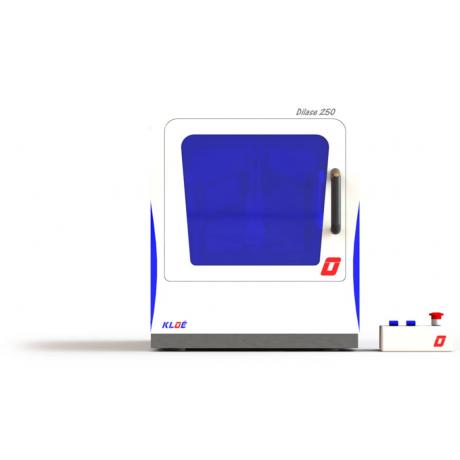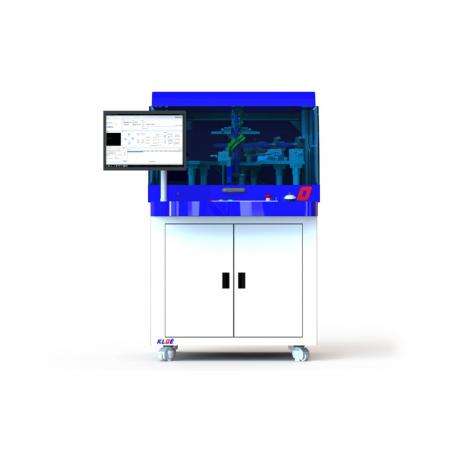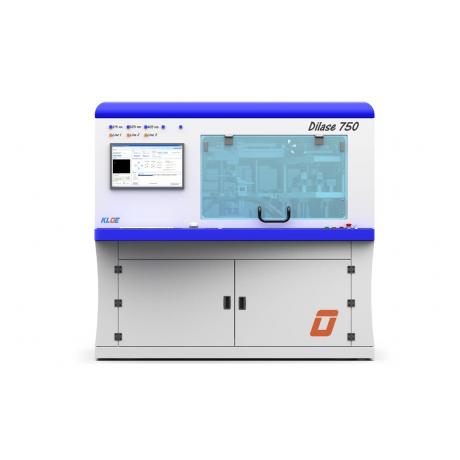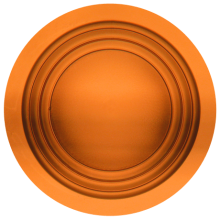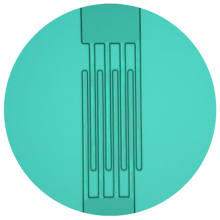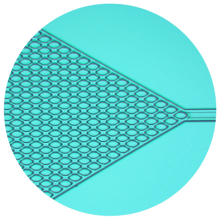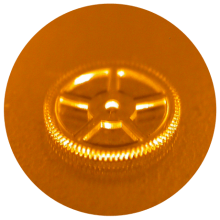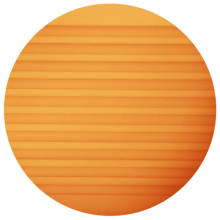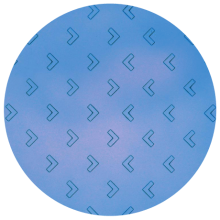What allows Dilase equipment to proceed without the need for autofocus systems?
What is the reason for introducing an autofocus system in a direct laser writing machine?
In laser writing, autofocus system are typically in charge of automatically adjusting the distance between the focusing mean (objective typically) and the substrate.
The autofocus system is hence mostly used to compensate the lack of depth of field. Indeed, if the depth of field is low (1x1), the machine must permanently adjust the focusing distance throughout the writing to compensate any thickness variations or inhomogeneities, in order to ensure that the expected level of resolution is maintained constant over the entire working surface.
Why can the autofocus system be more a disadvantage than an advantage?
In laser writing as in photography, there is no way to control which object the autofocus will choose to focus on.
Suppose there is dust or a cavity on the surface of a wafer: this will create an extra thickness. When autofocus goes over it, it will directly impact the focusing distance.
The laser writing beam will no longer be focused on the surface of the sample but on the top of the dust.
If the depth of field is too low, it can’t compensate this sudden change of focusing distance: consequently, the objects are no longer written with the expected dimensions.
Sudden changes of reflectivity over a surface is also known as being impacting on the performance of autofocus systems, so that processing a photoresist overlaying patterns that would typically be partially made of metal (gold, copper, silver...) may be subject to critical variations of the expected feature size.
Finally, the autofocus system is also known as not offering the capability to write close to the edges of one sample. For this reason, it is not adapted to write on small samples, since the autofocus systems cannot operate closer than 5mm far from sample edges, which considerably reduces the writing area of a 10x10mm² sample to…only one centered point. Also, with an autofocus system, writing on a curved surface is impossible or very complex.
In conclusion, a motorized and software-driven system offers more flexibility.
Why our Dilase equipment don't need for an autofocus system?
Kloe technology eliminates the need for an autofocus system thanks to its specific optical path with an unequalled depth of focus, minimum aspect ratio > 1x20, so several tens of µm with a 1µm beam.
With Dilase technology, none effort is demanded to an autofocus system or to the user to ensure keeping the same resolution over the whole surface, whatever the substrate type or thickness, whatever the substrate or photoresist reflectivity…
This will also strongly help in case of flatness variations of the photoresist deposit or of the substrate itself.
Thanks to this very large depth of focus, with a minimum 1 : 20 aspect ratio guaranteed, the direct laser writing machine will be able to write:
- in thin resist layers as well as in thick resist layers, with the same ease, with the same resolution, and with no roughness nor stitching defects.
- in only one single pass laser into thick layers to prevent from having to adjust the focusing point over the total thickness to proceed in several passes.
- With the same resolution and the same rendering quality :
- onto a small sample or on a whole wafer and
- from the right center until the edges of the sample.

